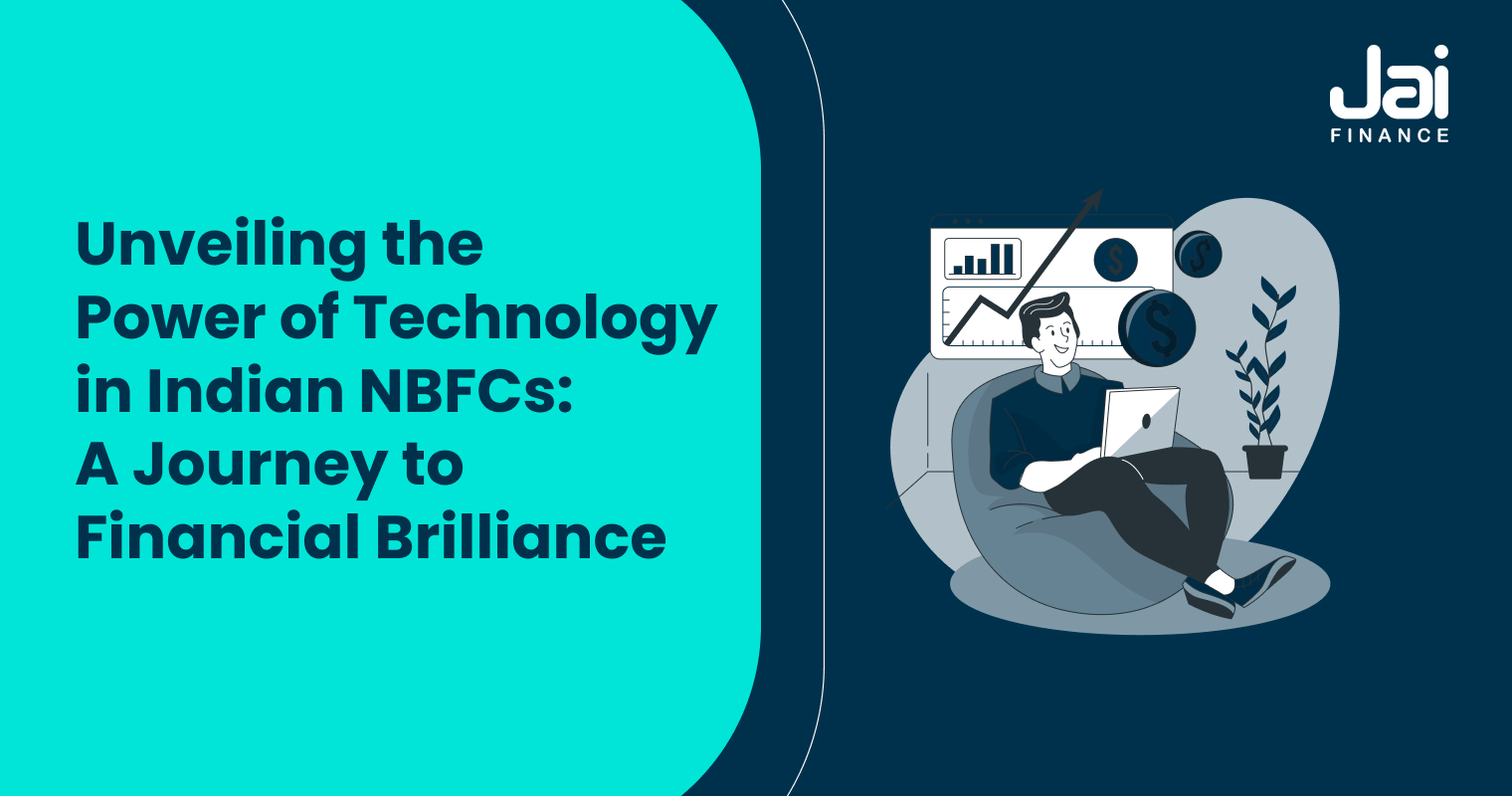
Table of Contents
Unveiling the Power of Technology in Indian NBFCs: A Journey to Financial Brilliance
By Jai Finance | June 17, 2025
Introduction: Journey to Financial Brilliance
Have you ever heard of the bird named ‘financial inclusion’? No? We’ll tell you. It’s a bird that helps you fly; fly at a height where every financial service (banking, savings, credit, etc.) looks affordable. There’s one category of players who have made sure that this bird reaches every individual in India— ‘NBFC’ (Non-Banking Financial Company). We cannot recall when it happened, but the digital transformation in NBFCs was lightning fast and very huge. And when it met the advanced technology, it changed the whole financial scene in India. What did it do? What it didn’t, you should ask. Improved risk assessment, smooth consumer experience, sky-high efficiency, and whatnot! Since the integration of NBFC technology, the way financial institutions operate has completely leveled up.
Today, we are going to run you through how the current technology changes and strategic partnerships are redefining the future of NBFCs.
Role of Emerging Technologies and Strategic Partnerships for NBFCs
Won’t you agree that the Indian financial sector has undergone a major technological advancement phase in terms of NBFCs? Of course, you will! AI in NBFCs, blockchain in finance, and fintech change is helping these institutions bridge the gap between traditional banking and digital finance. Also, as we mentioned earlier, strategic partnerships with fintech firms is fueling this shift. NBFC digital lending, fraud detection, and credit risk analysis are some of the positive outcomes of this entire modification.
Technologies Defining a New Paradigm for FinTechs and NBFCs
We told you about the financial evolution and all. But do you think all these have been possible without technological development? A big ‘NO’! We will run you through some of the technologies that were or are a part of this transformation.
- Artificial Intelligence (AI) & Machine Learning (ML): AI in NBFCs is helping in data-driven credit assessments, fraud prevention, and personalized customer services.
- Blockchain in Finance: What is this doing? Transparency, security, and reduced fraud risks in digital transactions. Sounds great, doesn’t it?
- Robotic Process Automation (RPA): Automating repetitive tasks to improve operational efficiency.
- Cloud Computing: Providing scalable and cost-effective solutions for NBFCs to store and process data securely.
- Big Data Analytics: Assisting in customer profiling, risk management, and demand forecasting.
Strategic Partnership Models Between FinTechs and NBFCs
Strategic partnerships between fintech firms and NBFCs have become more than important for the digital transformation in NBFCs. These partnerships focus on:
- Co-Lending Models: NBFCs and fintechs collaborate to provide loans to underserved markets.
- Embedded Finance: Integrating financial services within non-financial digital platforms.
- Risk-Sharing Arrangements: Utilizing AI in NBFCs to improve credit underwriting capabilities.
- Open Banking: Encouraging secure data-sharing between financial institutions for better customer service.
Future of NBFCs
Trust us, the future of NBFCs is highly dependent on the adoption of digital technologies. With the increased penetration of digital lending platforms and fintech innovation, NBFCs are expected to play a major role in financial inclusion in India. The continued adoption of AI, blockchain, and cloud solutions will further boost the sector's growth and resilience.
Challenges Faced by Traditional NBFCs
Despite the rapid digital transformation, traditional NBFCs face several challenges, such as:
- Regulatory Compliance: Adhering to the ever-changing financial regulations.
- Cybersecurity Threats: Maintaining secure digital transactions.
- Technology Integration: Transitioning from legacy systems to advanced platforms.
- Customer Trust: Gaining trust and credibility in digital lending solutions.
- Funding Constraints: Securing capital for digital transformation initiatives.
AI and ML Transforming Credit Decisions
AI and ML are contributing to the credit decision-making in NBFCs by:
- Analyzing vast data points to assess creditworthiness.
- Automating loan approvals for faster processing.
- Reducing default risks with predictive analytics.
- Offering customized financial products based on customer behavior.
Robotic Process Automation (RPA): Accelerating Operations
RPA is helping NBFCs to boost operational efficiency by automating processes such as:
- Customer onboarding and KYC verification.
- Loan processing and documentation.
- Compliance monitoring and reporting.
- Automated customer support via chatbots.
Conclusion: The Road Ahead
The integration of NBFC technology is revolutionizing India’s financial sector. With the rise of AI, blockchain, and RPA, NBFCs are on a journey to financial brilliance, offering smooth and efficient financial services. Strategic partnerships with fintech firms are further amplifying this transformation, making NBFC digital lending more inclusive and accessible. Moreover, firms like Jai Finance are making the whole process a lot easier.
Remember, as the sector continues to evolve, adopting digital transformation in NBFCs will be the key to long-term success.



